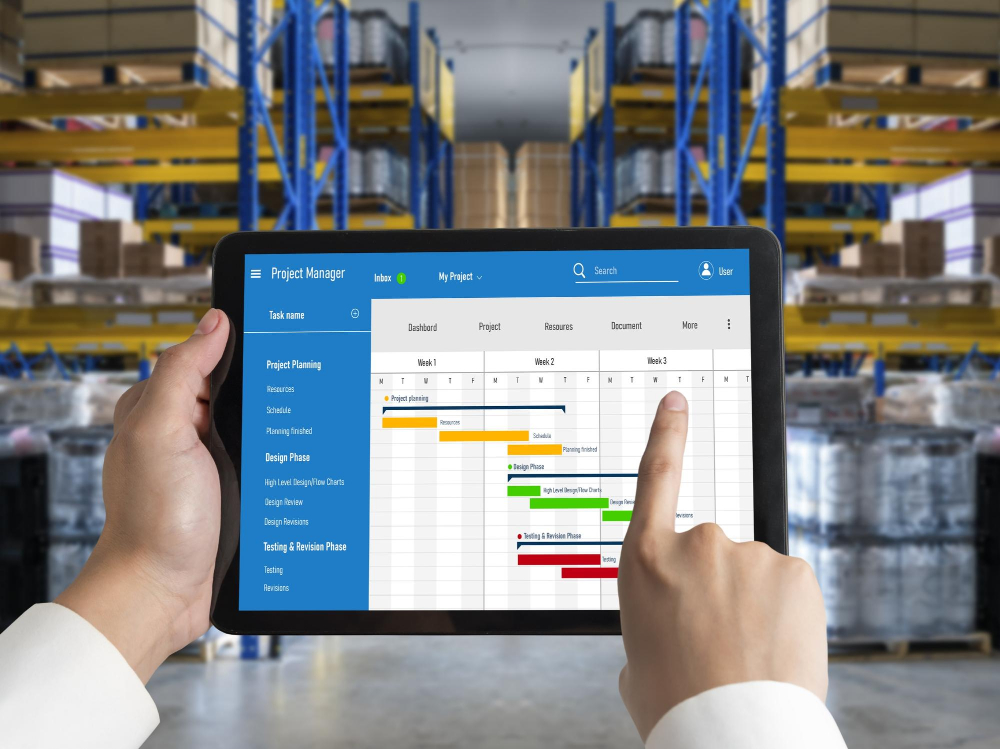Introduction:
In the complex realm of supply chain and logistics, sophisticated systems are essential for optimal operations. Inventory Management Systems (IMS) and Warehouse Management Systems (WMS) are two pivotal tools, each with unique functions yet often working in tandem. This blog explores the distinctions between IMS and WMS, highlighting their roles and the integration that bridges their functionalities.
Inventory Management System (IMS):
The Inventory Management System (IMS) is integral to a business’s operational efficiency, managing inventory-related tasks across the entire enterprise. Key features of IMS include:
Inventory Tracking: IMS provides real-time tracking of inventory across multiple locations and warehouses. By utilizing IoT sensors and advanced analytics, IMS ensures precise monitoring of stock levels and locations.
Reorder Management: Automating the replenishment process, IMS generates purchase orders, manages deliveries, and maintains supplier relationships, optimizing resource allocation and minimizing stockouts.
Demand Forecasting: With sophisticated forecasting techniques, IMS analyzes historical data and employs AI and machine learning to predict future demand, enabling proactive inventory planning.
Stock Valuation: IMS calculates inventory value based on cost factors, facilitating accurate financial reporting and data quality management.
Warehouse Management System (WMS):
Conversely, the Warehouse Management System (WMS) focuses on optimizing warehouse operations, enhancing efficiency within distribution centers. Core features of WMS include:
Warehouse Layout and Organization: WMS improves the arrangement of inventory with advanced data management techniques, optimizing bin locations and racking systems for efficient storage.
Inventory Tracking Within the Warehouse: WMS ensures real-time tracking of inventory movement from receiving to shipping. It integrates with IMS for a cohesive view of inventory across the supply chain.
Order Fulfillment: Overseeing the entire order fulfillment process, WMS utilizes advanced analytics and real-time tracking to enhance order picking, packing, and accuracy.
Labor Management: WMS optimizes labor resources through task assignment, workload balancing, and performance tracking, contributing to effective resource allocation and risk mitigation.
Harmonious Integration Between IMS and WMS:
IMS and WMS often operate in harmony, creating a seamless integration that supports both inventory and warehouse management. This integration facilitates real-time data flow, ensuring synchronization between inventory levels and warehouse operations. By leveraging cloud solutions and scalable data lakes, businesses can achieve granular data analysis and effective data integration, leading to enhanced efficiency and proactive problem-solving.
Conclusion:
In summary, IMS and WMS serve distinct but complementary roles in supply chain management. IMS focuses on overall inventory management and optimization, while WMS enhances warehouse operations. The integration of these systems is crucial for achieving a cohesive supply chain strategy, driving efficiency, and ensuring success in the dynamic landscape of modern commerce. Leveraging advanced ERP systems and data governance practices allows businesses to thrive by harmonizing inventory and warehouse management.







